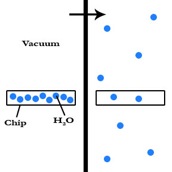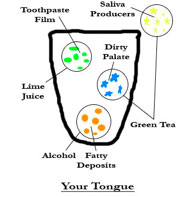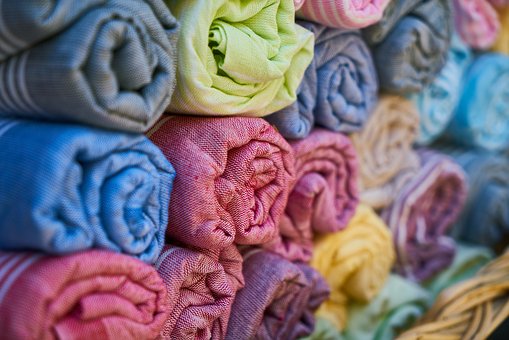In 1980, the science behind cuisine, formerly known as molecular gastronomy, was introduced into the culinary world. Cooking experts in some of the top restaurants from London to New York City have demonstrated how understanding the science behind simple foods — such as French fries and mayonnaise — can add new dimensions to taste by simply introducing new methods in preparation. New technology has advanced the diversity of molecular gastronomy, leading to the transfer of innovation from chemistry labs to the kitchen. While newly engineered kitchen tools are relatively expensive, the founding cooks of molecular gastronomy are hopeful about the future of science in everyday cooking.
“Centrifuge” doesn’t stand out as a household name when it comes to kitchen appliances. But someday, they might be as useful as the common blender to cooks around the globe. Some of the finest chefs in the world are turning to equipment that previously was only found in a laboratory to create new dishes that have the potential to revolutionize our concept of cooking. They are being inspired by a new field of science known as molecular gastronomy, which is attempting to explain the science behind cooking. Sure, you might have boiled an egg before, but have you ever thought about why an egg gets hard when boiled? Or why you can fry an egg so that the white protein gets hard but the yolk stays runny? The new-age group of chef-scientists is working to figure that out, and in turn use that information to create new, innovative dishes that were previously thought to be impossible.
A Short History of Molecular Gastronomy
The field of molecular gastronomy is the brain child of scientist Herve This (pronounced “Thees”). Shortly after receiving his diploma in physical chemistry in 1980, This had some friends over for dinner. He had found a new recipe for a cheese soufflé that said to add the eggs two at a time, but being a scientist and seeing no point to this, he added all the eggs at once. An hour later, his soufflé turned out to be a disaster, and This began to wonder why it would make a difference to add the eggs two at a time — and thus molecular gastronomy was born [1].
This and his partner, Nicolas Kurti, first coined the term molecular gastronomy in 1988. Together, they developed the initial scientific purpose of this new field. Their goal was not to be chefs, because chefs were only concerned with the preparation of food. Rather, molecular gastronomy was to be the study of the physics and chemistry behind the preparation. They wanted to understand why mayonnaise becomes firm when you mix oil and eggs or why a soufflé swells when you cook it [2]. They believed that if they had a better understanding of why certain foods are cooked the way they are, and what happens to the foods as they are cooked, then they could unlock new worlds of innovation in the culinary world.
Twenty five years later, This is still pursuing his passion in his lab-turned-kitchen at the Collége de France in Paris [3]. Earlier this year he published his latest book, entitled Kitchen Mysteries, where he discusses the science behind the most basic components in many of our meals (eggs, milk, bread, etc.) and answers questions such as why vegetables change color when cooked [4].
While This and Kurti initially came up with the idea, there have been a few other chefs that have taken it to the commercial marketplace. Over the past ten or so years, chefs such as Wylie Dufresne, chef of the New York restaurant WD-50, and Heston Blumenthal, chef of the world famous Fat Duck restaurant near London, have worked to combine the theories of molecular gastronomy into their cooking. And they are doing it well — in both 2005 and 2006, Blumenthal was ranked among the top three chefs in the world by the British Restaurant magazine [2].
What are they doing to make themselves so successful? They are taking food to the next level; they are using science to make the perfect French fry, or using new equipment to cook a steak to a perfect medium rare every single time. They are also experimenting with new ways to serve classic dishes, like a BLT with mayonnaise balls and tomato molasses instead of the traditional sandwich.
Science in the Kitchen
Chef Heston Blumenthal is at the top of his game. His restaurant, the Fat Duck, has received the incredibly prestigious rating of three Michelin stars, a reputation awarded to only three restaurants in all of the UK as of 2004 [5]. He is not doing it by serving the most extravagant meal you can find, either. One of the most sought-after items on his menu is the “chips,” or French fries as they are known in the States. But these are not just any French fries, these are scientifically perfect French fries. To get the perfect fry, the chefs at the Fat Duck first had to understand what happens to the potato when you cook a chip, and then they worked to adjust that process to get the crispest fry with the lightest center (see Fig. 1).
They start using only Maris Piper potatoes, because they contain the optimum starch content for a fry. The potatoes are first hand-sliced and cooked in a water bath at 70°C for one hour. During this, the starch granules in the potato begin to gelatinize. After being pulled from the bath, the fries are cooled to 5°C to allow the swollen starch granules to retrograde, which occurs when the amylose compounds in the starch shrink to a microcrystalline state, allowing the center of the fry to remain light and fluffy while letting the outside become crisp. The fries are then simmered at 95°C, and during this stage the cellulose and hemicellulose in the fries breaks down, bringing the fries to the verge of crumbling into pieces. Because of this, the fries must be very quickly cooled in a vacuum-sealed chamber when they are taken out. As science dictates, the falling pressure allows water to rapidly evaporate from the fries, leaving them with a hard crust while keeping them from falling apart.
But the fries are still not done. They are next fried at 150°C for five to eight minutes, which is not hot or long enough to brown them but just enough to cook the crust and force out a little more water. Another stop in the vacuum chamber removes more water. At this point, the fries are put in the refrigerator until they are ordered, because Blumenthal does not want his fries to be stale. The final phase in cooking is to fry them one more time at 200°C, which gives them their brown color and finishes the crispy crust just before they are served hot and fresh to the table [6]. The product is one of the lightest, crispest French fries ever made. And it was only possible through understanding science.
But Blumenthal does not only want to delight you with a great take on an old favorite. He also wants you to be able to taste every bit of the food that he serves. He discovered that the three things people are most likely to do before they eat are brush their teeth, have a drink, or smoke. All three of these actions leave films on the tongue, clogging flavor receptors and keeping a person from fully tasting the food. In order to counteract that, Blumenthal created what he calls “nitro-green tea mousse”, which he serves as an appetizer (see Fig. 2). The mousse is made up of three main ingredients: lime juice, which contains an acid used to neutralize the film left by toothpaste; green tea, which contains tannic polyphenols that cleanse the palate; and 0.5% vodka, which is just enough alcohol to dissolve any fat left on the tongue. The polyphenols in the green tea also stimulate salivation, which makes the rest of the meal taste juicier [6]. These three ingredients are combined into a mousse, which is chilled with liquid nitrogen to make it light enough so it almost melts to nothing in your mouth. The outcome? A fresh, and light appetizer that, thanks to science, enhances the flavors in the rest of your dinner.
Another chef using molecular gastronomy to experiment with new recipes is Wylie Dufresne, executive chef of the restaurant WD-50 in New York City. He works in a new area of the field involving the addition of small amounts of chemicals to change the molecular structure of the food. For example, adding a compound called carrageenan to a cup of coffee will turn it into a custard before your eyes [7]. Now that may sound odd, but those same chemicals are used every day in products that we eat all the time: Doritos chips and M&Ms, for example. And Dufresne, like Blumenthal, is not doing this to mess with your palate or to cook up something strange and terrible. The chefs still believe that cooking good food is their true goal; they just try to do it in a cool new way.
Take, for instance, one of the ideas Dufresne first tried when he was turned on to molecular gastronomy — fried mayonnaise. Now why would anyone want to fry mayonnaise? At first, it sounds counter-intuitive. Adding hot oil to milk, which is essentially water, is a recipe for disaster. The water will form small boiling bubbles in the grease and spatter the hot grease all over you and your stove. As it turns out, it is not actually possible to fry mayonnaise, or at least not the mayonnaise you buy at the store. But if you start from scratch and add just a little of his secret ingredient (gellan gum, the same ingredient used to make chocolate milk taste smooth), you can actually fry the mayonnaise and roll it into little balls. The gellan gum helps to hold the mixture of milk and oil together at high temperatures. Dufresne was then faced with the task of figuring out what to do with his fried mayonnaise balls, so he decided to serve them with a slice of pickled beef, some tomato molasses, and a seam of finely chopped romaine lettuce. Voila! A Dufresne take on a BLT [8].
The Technology That Makes All This Possible
All of these innovative recipes would be impossible without the machines used to cook them. As the field of molecular gastronomy has matured, chefs are beginning to use tools once saved for the depths of chemistry labs. A few companies have recently started to mass produce and market some of these tools, enabling even you and me to cook like the pros. Below are some of the machines available today:
The Anti-Griddle
Take a dollop of whipped cream and place it on top of the Anti-Griddle for 20 seconds, flip it for another 20, and you get a whipped cream pancake — whipped cream that’s crispy on the outside and smooth on the inside. That’s because the Anti-Griddle is a machine that chills its top surface to a cool -30°F, allowing things like creams and fruit juices to quickly chill so that they are crisp on the outside but creamy on the inside [9].
The Sealer and Circulator
Cooking sous-vide is an old French technique where food is placed in a vacuum sealed bag and cooked in water well below a boil. However, it has always been difficult to keep the water temperature constant throughout the cooking process. Enter the thermal bath, a device that can keep water at a particular temperature within a fraction of a degree. Now you can seal a steak in a bag with some butter and seasonings to lock in the juicy flavor and drop it in a bath at the exact right temperature to cook the meat medium rare. Because the temperature of the bath is constant throughout, the entire steak will cook to a flawless medium-rare. Once the steak is done, take it out of the bag and quickly sear it in a pan to give it some extra flavor, and you will have the perfect steak every time [10].
The Smoking Gun
So you want to cook a piece of smoked salmon, but you do not want to go through the effort of building the fire it would usually take to do so. Now, you don’t have to. The Smoking Gun is a device that, when filled with hardwood sawdust and lit (hickory and mesquite are common flavors), produces instant smoke that can be infused into your everyday cooking. Put the salmon into a vacuum bag, pump in a little smoke, seal and cook, and you can have delicious smoked salmon without the hassle of a smoker [10].
What’s Next?
Molecular gastronomy is slowly making its way from the science lab to the kitchen (see Fig. 3), but the only places you will see it for now are at the few restaurants whose chefs are daring enough to use it. The science is still young, though, and is only slowly starting to build recognition among other top chefs in the culinary world. One of the episodes of the television show “Next Iron Chef”, aired earlier this year on the Food Network, challenged the chef competitors to create a meal utilizing many of these new ingredients and technologies.
It will likely take a little longer for this technology to reach your kitchen at home. Most of the equipment, with the exception of the smoking gun, is forbiddingly expensive. For example, purchasing an Anti-Griddle for $1000 to cook one or two novelty desserts doesn’t fit into too many budgets. The chemicals, while available, are somewhat expensive and hard to find. Despite that, This sees a future in his science. He relates it to the field of Grand Prix racing, where just as antilock brakes were originally invented by an elite racing team but eventually found their way into every car on the road, the culinary developments taking place in the top restaurants will eventually find their way into our kitchens [11]. Who knows? Maybe one day we will all be making whipped cream pancakes for our grandkids!






